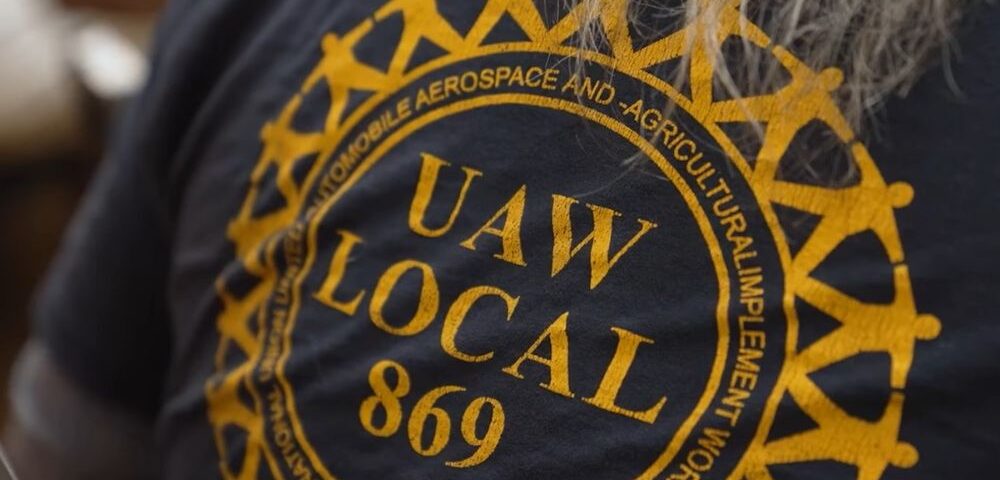- Have any questions?
- 888-432-8878
- steve@sebackground.com

Software Engineers Need to Consider Gartner’s AI Upskilling Predictions
October 8, 2024
Let’s Work Out How to Reduce the Likelihood of Workplace Insubordination
October 10, 2024Stellantis and UAW are bumping heads again, and this time, their battle involves legal action. The Stellantis-UAW dispute revolves around the union’s decision to go on strike over delays in the automaker’s planned investments, which Stellantis says is a violation of the contract the two parties managed to establish last year.
The UAW’s strike threats originated at the Denver Parks Distribution Center after the UAW Local 186 unit voted to authorize a strike without following the due process that it had agreed to follow before making such a decision. Stellantis has filed eight additional lawsuits against the UAW in Michigan, Ohio, Indiana, Texas, Arizona, Massachusetts and Oregon, according to Reuters.

Image Credit: UAW’s “Keep the Promise Stellantis” video
The Stellantis-UAW Dispute Takes a Turn for the Worse
There are a couple of different issues to blame for the United Auto Workers’ (UAW) strike threats and the resulting lawsuits by Stellantis. The legal battle between UAW and Stellantis initially began when the union felt the company was backtracking on its promise to reopen the Belvidere assembly plant—a commitment that was made during the union’s unforgettable Stand Up Strike last year. The automaker had committed to investing $1.5 billion USD in the Illinois plant, and continued plans to build new mid-size trucks by 2027.
As part of this commitment, Stelantis also reassigned the employees from the factory to work at other locations and agreed to continue to pay those who were waiting for the jobs to open back up. The deal included 74% of pay and full healthcare benefits so employees were not left in limbo without any support. The company also won a $334.8 million USD award from the Energy Department to build electric vehicles at the Belvidere location, which was expected to help with reviving the plant. Unfortunately, reports suggest that the reward has not been finalized and shared.
Back in August, Stellantis said that its plans to invest in the Belvidere plant would be delayed but it reiterated that it aims to “firmly stand by its commitment,” after ensuring the “company’s future competitiveness and sustainability.” Despite the reassurance, the company has not disclosed any new timetables on its investment plans, and this has led the union to believe that Stellantis is planning to renege on its promise.
On their website, the UAW stated that “the company CONFIRMED that they are planning to violate our contract once again by moving production of the Dodge Durango from the Detroit Assembly Complex to Canada.” The automakers has denied making any such claims but the union in proceeding with its efforts to resist the organization and any underhanded attempts to go back on its commitment to the workers.
The UAW Makes Strike Threats but Stellantis Refuse to Allow Matter to Proceed
Enraged by the company’s delay and certain that it will continue on this path until they can make a more believable excuse for leaving the plant closed, the union announced its decision to strike again. The UAW Stellantis Council met on September 26th to discuss the company’s ongoing failure to honor the terms of their agreement, arranging for a vote on whether the union should strike.
“The evidence is clear that CEO Carlos Tavares is steering Stellantis on a crash course that will cause our members tremendous harm. Given all that we heard, we resolved to meet this make-or-break moment without fear and to fight for the rights of our members.
We unanimously recommend to the membership that every UAW worker at Stellantis prepare for a fight, and we all get ready to vote YES to authorize a strike at Stellantis.”
—UAW Memo
This disagreement lies at the heart of the Stellantis-UAW dispute. Stellantis filed its suit against the UAW and UAW Local 230 in Los Angeles over the union’s decision to organize and legitimize the strike authorization vote without following the predetermined procedure.
Stellantis states that according to the Collective Bargaining Agreement (CBA) from 2023, there are three steps to determine and act on a strikable grievance, and the union is expected to give the company sufficient time to respond before proceeding at each step. The strike authorization vote can only be held after all the steps are completed. Stellantis is certain that the UAW is aware of this and has educated its members on the procedure recently, but it failed to follow protocol.
Regardless of the vote’s validity, the union members have expressed that they are in favor of authorizing a strike against Stellantis.
Stellantis’ Lawsuit Against the UAW Also Stems from Their Disagreement on the “Job Banks” Concept
The UAW also recently proposed to restore the “Job Banks” concept at the organization. This would make it impossible for the Detroit Three automakers from laying off their employees regardless of the circumstances. The enforcement of jobs banks would require Stellantis to find employment in one form or another for its existing employees but such commitments are quite risky for a business to make.
Stellantis refused to make any such deal with the union, citing it as a “contributing factor to the automaker’s bankruptcy in 2009,” explaining that it could put undue pressure on the business in the future. UAW President Shawn Fain brushed off any claims that the job banks systems had caused the bankruptcy in the past or would pose a threat in the future, pointing to the “gross mismanagement by top executives” as the real problem at the organization.
Volkswagen made a similar commitment to workers in Germany but after recent financial struggles, the business is considering going back on its words—a choice that has greatly angered its workers. Returning to the problem at hand, Stellantis’ lawsuit against the UAW might hold up in court so we’ll have to see how things proceed between the two parties.
The UAW’s historic win against the Detroit three last year opened up the conversation of protests in other industries, and since then, the union has been faced with some big wins and some major losses.
The dockworkers’ protest against the port authorities and shipping companies has had a similar impact more recently, but it’s likely that there are many more employee-led protests to come.
The post The Stellantis-UAW Dispute Takes a Turn Towards Legal Action appeared first on The HR Digest.
Source: New feed




